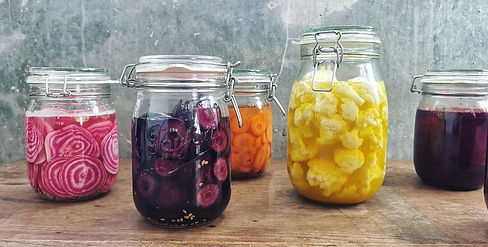
Fermentatie
FAQs& facts
Op deze pagina wordt samen met jou een 'fermentatie kennisbank' ontwikkeld. Je vindt hier een aantal dossiers over verschillende fermentatie onderwerpen. Daar onder staan een aantal veelgestelde vragen en feiten uitgewerkt.
Staat jouw vraag er niet tussen? Mail deze dan naar Ferm via onderstaand mail icoontje.


Waarom is fermentatie zo gezond?
Door regelmatig fermenten te eten en te drinken breid je je microbioom(collectie van micro-organismen in jouw darmstelsel) uit. . Daarnaast verteren de micro-organismen uit je fermenten je voeding als het ware voor, daardoor wordt de voeding makkelijker verteerbaar en zijn voedingstoffen beter beschikbaar voor opname in het menselijk lichaam.

Hoe start je een fermentatieproces?
Door een omgeving te creëren waarbij je de gezonde micro-organismen stimuleert en de ongezonde elimineert.
Dit kan bv door het toevoegen van zout, al dan niet afsluiten van zuurstofde juiste temperatuur en luchtvochtigheid.



Wat zijn micro-organismen?
Micro-organismen, ookwel microben genoemd, zijn uiterst kleine eencelligen die overal in de natuur voorkomen. De mens kan niet leven zonder micro-organismen maar er bestaan zowel goede als slechte microben. Binnen fermentatie werken we vooral met bacteriën, gisten en schimmels.

